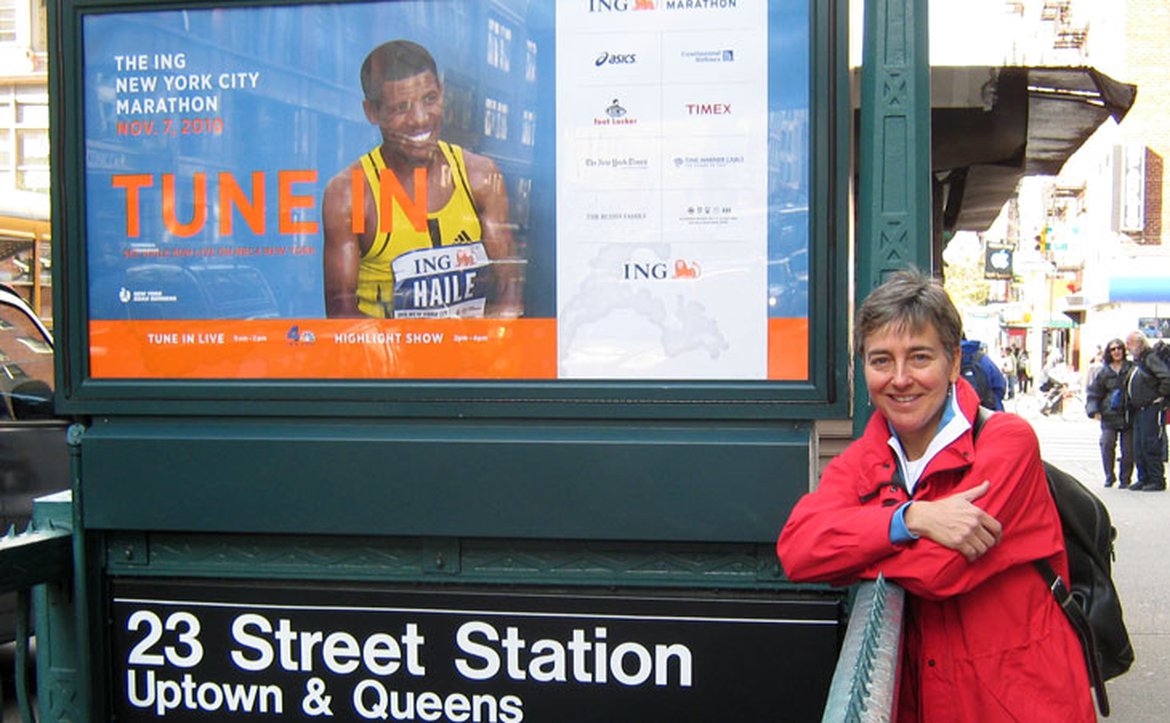The Long and the Short of It
Nov. 16, 2018

November always makes me feel a little nostalgic. Not for what you might think – the glorious days of summer – but for something else entirely: The New York City Marathon. That might seem weird to a lot of you, but I LOVED that race. So much so, that I ran it five times.
I’m not the only one who loves the New York Marathon. Native New Yorkers – non-runners – LOVE their marathon too. Every year, on the first Sunday in November, they get up early to stake out a spot on the streets. And they stand there, sometimes five deep, cheering all day long. Even if they don’t personally know a single soul out there running. That’s New York spirit for you.
Looking back, I’d have to say that my first New York was the most memorable. Sure, it was my maiden run through the city’s famous five boroughs. But I think it had more to do with the horrific events of September 11. That November, it seemed especially important for New Yorkers to come out en masse to celebrate something so simply human as putting one foot in front of the other.
However, even with millions of people crowding the streets, and bands on every corner blasting out inspiring tunes, 42.2 kilometers is still a very long way.
Or is it? Isn’t it just one kilometer, run over and over again?
When I ran New York, I always made a point of focusing only on the specific kilometer I was running. And I used a mantra. I would say to myself, over and over again: “Working on kilometer 1, chipping away at kilometer 1, eating into kilometer 1.”
Until I got to kilometer 2, of course. Then it was: “Working on kilometer 2, eating into kilometer 2…” You get the idea. On and on I’d go like that until I finally crossed that blasted (oops, I mean wonderful) finish line in Central Park.
The point is, I didn’t dare think about what was ahead of me. I needed to break the big race into bite-sized chunks. I needed to feel it was somehow manageable.
Writing is like that. For a reader, big blocks of text can be overwhelming. And off-putting. How many times have you looked at a long paragraph, or a long, convoluted sentence – even a big, long word – and instantly thought to yourself, “Ugh, that looks like a slog. No thanks.”
The simple fact is, shorter sentences are easier to read. According to the American Press Institute’s oft-cited research study, “Readers’ Degree of Understanding,” people will understand 90-99% of sentences with an average of 15 words. With a 28-word sentence, they will understand only 50-59%. A 43-word sentence? Forget it. Comprehension drops below 10%.
The same applies to word length. On their brilliant website, the UK government urges its own writers to avoid multi-syllabic sentences. When you use a longer word (8 or 9 letters), they say, “users are more likely to skip shorter words (3, 4 or 5 letters) that follow it. So, if you use longer, more complicated words, readers will skip more.” And, it follows, miss your message.
There are plenty of tools you can use to check not just word and sentence length, but also complexity. The most obvious is the Word Count function on Microsoft Word. Others include:
- Flesch Reading Ease Calculator
- Hemmingway App
- Clarity Grader
- Readability Score – this one grades your copy according to a variety of tests, including the aptly-named Gunning Fog Index
Experiment with these tools to see which ones you like best. But whatever you do, always keep this in mind: Why do we write if not to communicate? And what is communication without comprehension?
Above all, take pity on your poor readers. They’re smart but they’re busy. Don’t make them slow down or work so hard they miss your point. Like me at the New York Marathon, they just want to get to the finish line so they can start thinking about the next race.
Writing Tips & Tools